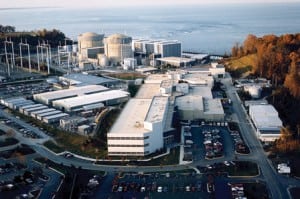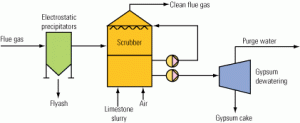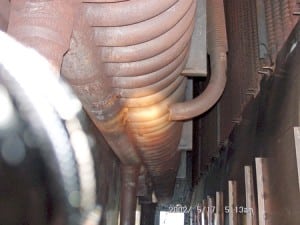-
Legal & Regulatory
Regulators should stop playing the greed card
In early February, Western GeoPower (WGP) announced its termination of a 20-year geothermal power purchase agreement (PPA) with Pacific Gas and Electric Co. (PG&E). A WGP press release explains that the company terminated the agreement because a regulatory approval condition had not been obtained within a 180-day time period stipulated in the PPA. WGP’s CEO, […]
-
Nuclear
Super Tuesday, Super Bowl XLII, and the nukes
The nuclear renaissance is likely to slow next year with a new tenant in the White House and many key regulatory positions in flux. Nuclear industry leaders are especially concerned that rules for construction loan guarantees will fall victim to the “wait and see” disease that infects those inside the Beltway every four years. If those rules aren’t in place before this November’s election, the nuclear renaissance may revert to the Dark Ages.
-
Coal
New coal plant technologies will demand more water
Population shifts, growing electricity demand, and greater competition for water resources have heightened interest in the link between energy and water. The U.S. Energy Information Administration projects a 22% increase in U.S. installed generating capacity by 2030. Of the 259 GW of new capacity expected to have come on-line by then, more than 192 GW will be thermoelectric and thus require some water for cooling. Our challenge will become balancing people’s needs for power and for water.
-
Water
Benefits of evaporating FGD purge water
In the U.S. and the European Union, scrubbers are installed on all new coal-fired power plants because their technology is considered the best available for removing SO2. A zero-liquid-discharge system is the best technology for treating wet scrubber wastewater. With the future promising stricter limits on power plants’ water use, ZLD systems that concentrate scrubber purge streams are sure to become as common as ZLD cooling tower blowdown systems.
-
O&M
Extend EOH tracking to the entire plant
Predicting combined-cycle system longevity and determining optimal maintenance intervals at the same time is difficult: It requires balancing repair costs against the risk of trying to squeeze that last bit of life out of some component before it fails. One solution to the problem is to extend coverage of an equivalent operating hours (EOH) preventive management program for turbines to the entire plant.
-
Business
ELECTRIC POWER celebrates 10th anniversary in Baltimore
At this juncture our industry is faced with greater uncertainty and opportunity than ever before. That’s why you won’t want to miss all the information, ideas, and networking available at the power generation industry’s premier event in May.
-
Commentary
Markets, not government, must set energy prices
By J. Bennett Johnston It is fashionable these days for policymakers, particularly those running for office, to somberly suggest that America needs an energy policy—thus implying that America has no energy policy. As one of the prime architects of an energy policy that has served America well, I could not disagree more. The fact that […]
-
Conservation and the law of the jungle
—Dr. Robert Peltier, PE Editor-in-Chief Ever wonder why many utilities receive so little respect from the public? In America, open competition requires every business to earn customers’ trust before making a sale. Unfortunately, many utilities exploit their monopoly position to avoid the hazards of competition, including losses. It’s no wonder that public utilities, as a […]
-
Coal
Global Monitor (March 2008)
DOE scraps FutureGen / U.S. nuclear plants have record year / Westinghouse wins TVA contract / UniStar Nuclear to file for COL / AEP ranks second in U.S. construction / China moving to the driver’s seat / New solar cycle poses risks / Dutch favor power from natural gas / POWER digest / Corrections
-
O&M
Focus on O&M (March 2008)
New CIP standards leave questions unanswered/Solving common analyzer problems/Qualifying rebuild shops
Search











